System integration and implementation are critical components of any successful IT project. Businesses rely on these processes to ensure that their technology systems communicate efficiently, operate seamlessly, and support overall business goals. Innerworks International specializes in guiding organizations through these processes, helping them leverage technology for improved efficiency and growth. Understanding system integration and implementation is essential for businesses aiming to optimize IT infrastructure, streamline workflows, and gain a competitive edge in the digital era.
Understanding System Integration
System integration is the process of combining different computing systems and software applications physically or functionally to work as a unified system. Innerworks International helps organizations design integration strategies that ensure all components of their IT ecosystem communicate effectively. There are several types of system integration, including vertical integration, which connects subsystems according to their hierarchy, horizontal integration, which links systems across departments, star integration, which creates point-to-point connections, and enterprise service bus (ESB) integration, which uses a centralized platform for seamless communication. The benefits of system integration are significant, including consistent data across systems, streamlined business processes, real-time insights, and reduced operational costs. Innerworks International emphasizes tailored integration approaches to align with specific organizational needs, ensuring maximum ROI and operational efficiency.
What is System Implementation?
System implementation refers to the process of deploying new software or IT systems within an organization. Innerworks International provides end-to-end support for system implementation, ensuring that technology solutions are effectively deployed to meet business objectives. The implementation process typically includes planning, where requirements are assessed and objectives defined; configuration, where systems are set up according to specifications; testing, to identify and resolve issues before deployment; deployment, where the system goes live; and maintenance, to ensure the system continues to operate efficiently. Aligning implementation with business goals is crucial, as it guarantees that technology solutions deliver tangible benefits. Innerworks International focuses on seamless implementation strategies that minimize disruption while maximizing efficiency and user adoption.
How System Integration and Implementation Work Together
System integration and implementation are closely linked, and their synergy is vital for IT project success. Integration ensures that all components of a system communicate and operate smoothly, while implementation focuses on deploying and configuring those systems within the organization. Innerworks International demonstrates how integration enhances implementation by ensuring that new systems work seamlessly with existing infrastructure. This combined approach allows businesses to achieve improved workflow efficiency, accurate data management, and optimized operational performance. Real-world examples from Innerworks International show that integrated and well-implemented systems can drastically reduce downtime, prevent data silos, and enhance decision-making capabilities.
Key Challenges in System Integration & Implementation
Despite the benefits, system integration and implementation come with challenges. Organizations often face issues such as incompatible systems, complex data migration, budget overruns, and resistance from users. Innerworks International identifies these potential pitfalls early in the project and applies strategies to mitigate them. Solutions include thorough system assessment, adopting flexible integration methods, rigorous testing, and structured training programs for end-users. By addressing these challenges proactively, Innerworks International ensures projects are completed on time, within budget, and with minimal disruption to business operations.
Best Practices for Successful System Integration & Implementation
Following best practices is essential for achieving success in system integration and implementation. Innerworks International emphasizes conducting a thorough needs assessment to identify gaps and requirements, which guides system selection and integration strategy. Adopting agile methodologies allows for iterative development, frequent testing, and continuous improvement, ensuring alignment with evolving business needs. Proper testing and user training are critical to prevent post-deployment issues and ensure high adoption rates. Continuous monitoring and maintenance after deployment guarantee that systems remain efficient and adaptable to future needs. By following these best practices, Innerworks International helps organizations realize the full benefits of integrated and well-implemented IT systems.
Tools & Technologies for Integration and Implementation
Modern IT projects rely heavily on specialized tools and technologies to ensure successful integration and implementation. Innerworks International leverages enterprise service buses, middleware, and API management tools to facilitate seamless communication between systems. Project management platforms, automated testing software, and deployment tools enhance efficiency and reduce human error. Cloud-based solutions and data analytics tools also support system integration and provide insights for informed decision-making. By utilizing the right technologies, Innerworks International ensures that IT projects are executed smoothly, cost-effectively, and with measurable outcomes.
Benefits of Effective System Integration & Implementation
Effective system integration and implementation offer numerous benefits. Organizations experience improved data flow, ensuring that information is accurate and accessible across all departments. Operational efficiency is increased by automating processes, reducing manual work, and minimizing errors. Decision-making is enhanced through real-time data insights, enabling managers to make informed choices quickly. Innerworks International has helped numerous clients achieve these benefits, resulting in reduced costs, enhanced productivity, and a stronger competitive position. Investing in proper integration and implementation strategies transforms IT systems from isolated tools into powerful business enablers.
Case Study: Real-World Success
A leading logistics company partnered with Innerworks International to integrate its warehouse management system with its existing ERP platform. The integration ensured real-time inventory tracking and automated reporting, while the implementation process was carefully managed to avoid operational downtime. The result was a 35% increase in operational efficiency, improved data accuracy, and faster order processing. This example illustrates how Innerworks International combines integration and implementation expertise to deliver measurable business outcomes.
Takeaway
System integration and implementation are fundamental to the success of IT projects. Innerworks International provides organizations with the expertise, strategies, and technologies needed to ensure that systems work together seamlessly and deliver maximum value. By addressing challenges proactively, following best practices, and leveraging modern tools, businesses can optimize IT operations, improve efficiency, and support strategic growth. Properly integrated and implemented systems transform IT infrastructure into a cohesive, high-performing environment that drives innovation and success.
FAQ
What is the difference between system integration and implementation?
System integration focuses on making different systems work together, while implementation involves deploying and configuring a new system within an organization. Innerworks International manages both to ensure seamless IT operations.
How long does a system implementation project typically take?
The duration depends on the complexity of the systems and organizational requirements. Innerworks International provides tailored timelines to ensure efficient and effective deployment.
What are the most common challenges in system integration?
Common challenges include incompatible systems, data migration issues, and user resistance. Innerworks International addresses these challenges with careful planning, testing, and training.
Which industries benefit most from system integration?
Virtually all industries benefit, including logistics, healthcare, finance, and manufacturing. Innerworks International has successfully served clients across multiple sectors, optimizing IT performance and data flow.
Why should businesses invest in professional integration and implementation services?
Professional services ensure projects are completed on time, within budget, and with high adoption rates. Innerworks International provides the expertise, tools, and best practices to maximize the value of IT investments.











